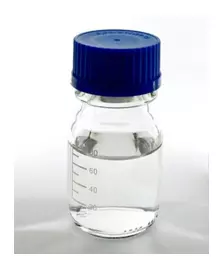IUPAC Name
poly(oxyethylene)
Cas Number
25322-68-3
HS Code
3907.29.11
Formula
(C2H4O)nH2O
Appearance
Clear, Colorless Liquid
Common Names
PEG, PEG 200, Polyethylene oxide, Polyoxyethylene, PEO, POE, PEG-4, Carbowax* 200
Packaging
80 @ 225 kg Steel Drum/ 316 @ 57 Kg Iron Drum. 18 MT
Polyethylene Glycol (PEG) is a polyether compound that is hydrophilic and nonionic. PEG is also known as polyethylene oxide (PEO) or polyoxyethylene (POE), depending on its molecular weight. It has a molecular formula of (CH2CH2O)n, where n represents the average number of oxyethylene groups, with n = 5 – 182 for typical PEGs (avg. MW 200-8000). PEG is known as a non-toxic, non-irritating, moisture preserving chemical. It also has a hold good solubility and lubricity, which makes it widely applicable in various industries.
Polyethylene glycol is produced by the interaction of ethylene oxide with water, ethylene glycol, or ethylene glycol oligomers. The reaction is catalyzed by acidic or basic catalysts. Ethylene glycol and its oligomers are used as a starting material, and the polymer chain length depends on the ratio of reactants.
HOCH2CH2OH + n(CH2CH2O) → HO(CH2CH2O)n+1H
Depending on the type of catalyst, the mechanism of polymerization can be cationic or anionic. The anionic mechanism is preferred because PEG can be obtained with a low polydispersity. The polymerization of ethylene oxide is an exothermic process.
It is used as the plasticizer, lubricity, binders and carriers properties in ceramic and tile industry.
Polyethylene glycol (PEG) is used as a chemical intermediate with the primary hydroxyl functionality which allows reactions typical of alcohols, such as conversion of a functional alcohol group to esters, ethers, amines and acetals.
PEG is used as humectants, solubilizers, stabilizers, and aids in increasing the absorption of ingredients of a product into the skin, such as cream and lotion.
It is used as a humectant in inks.
PEG is used as a softener, solvent, lubricant and carrier in the pulp industry.
PEG is used as a binder and modifier in latex paints.
PEG is used as a solvent, binder, lubricant, plasticizer and used in tablet coating, gelatine capsule, liquid oral medications.
PEG is used as an emulsifier in the textile industry.
